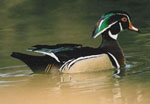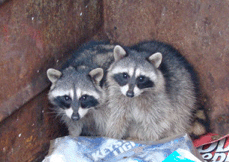|
Flora
--
| The 500 plus acres of Clear Lake State Park provide the visitor with a
unique opportunity to enjoy and study a great diversity of
plants. Near the lakeshore and along the creeks there are
aquatic growths of tule, cattail, willow, cottonwood, box elder, and
many other types of riparian plant life associated with water and
marsh areas.
|
 |
At the higher,
drier elevations of the park are blue oaks, California laurel,
foothill pine, California buckeye, mountain mahogany, and other
plants associated with the oak woodlands. |
 |
| The upper
elevations of the park developed from an ancient volcanic
flow. The years of erosion provide soil conditions for trees
and plants to gain foothold and provide an array of spring flowers
with some blooming late into the summer. Baby Blue Eyes,
Wavy-leaf Soap Root, Clematis, and Sticky Monkey Flower are just a
few of the wild flowers that can be seen along the trails. |
 |
 |
The lichens,
ferns, and mosses on the volcanic rocks dry in summer, but come to
radiant life during the winter wet season and provide spectacular
viewing along the trails and the road to the swim area. |
|
| Conditions
described in Flora provide habitat for many animals. Among
them are black-tail deer, gray squirrels, ground squirrels, skinks,
river otter, raccoon, mink, and muskrat. There have been
occasional sightings of mountain lion and ringtail.
|
 |
| The
park has the California Audubon designation as an Important Bird
Area. This indicates it provides essential habitat for
breeding, wintering, and/or migrating birds.
|
 |
With over
300 species identified in Lake County, any visit to the park
provides an opportunity to see numerous species. A Lake
County Seasonal Bird List is available at the park. |
 |
|
|
 |
|
|
 |
American
Robin, American White Pelican, and Varied Thrush are just a few that
might be seen in winter. Spring brings back the Osprey,
Bullock's Orioles, and many others. Among the year around
residents are California Quail, Wild Turkey, Scrub Jay, Oak
titmouse, at least six species of woodpeckers, the Great Horned Owl,
and other birds of prey. Herons, ducks, egrets, and grebes are
visible from creekside and lakeshore. |
 |
| |
 |
| There
is splendor in the park year around to be enjoyed at one's own
pace. Binoculars, bird and plant/flower/tree guides can be a
help in identifying flora and fauna of the area. |
| All features (plants, animals, artifacts) are protected in the
State Parks |
|
|











